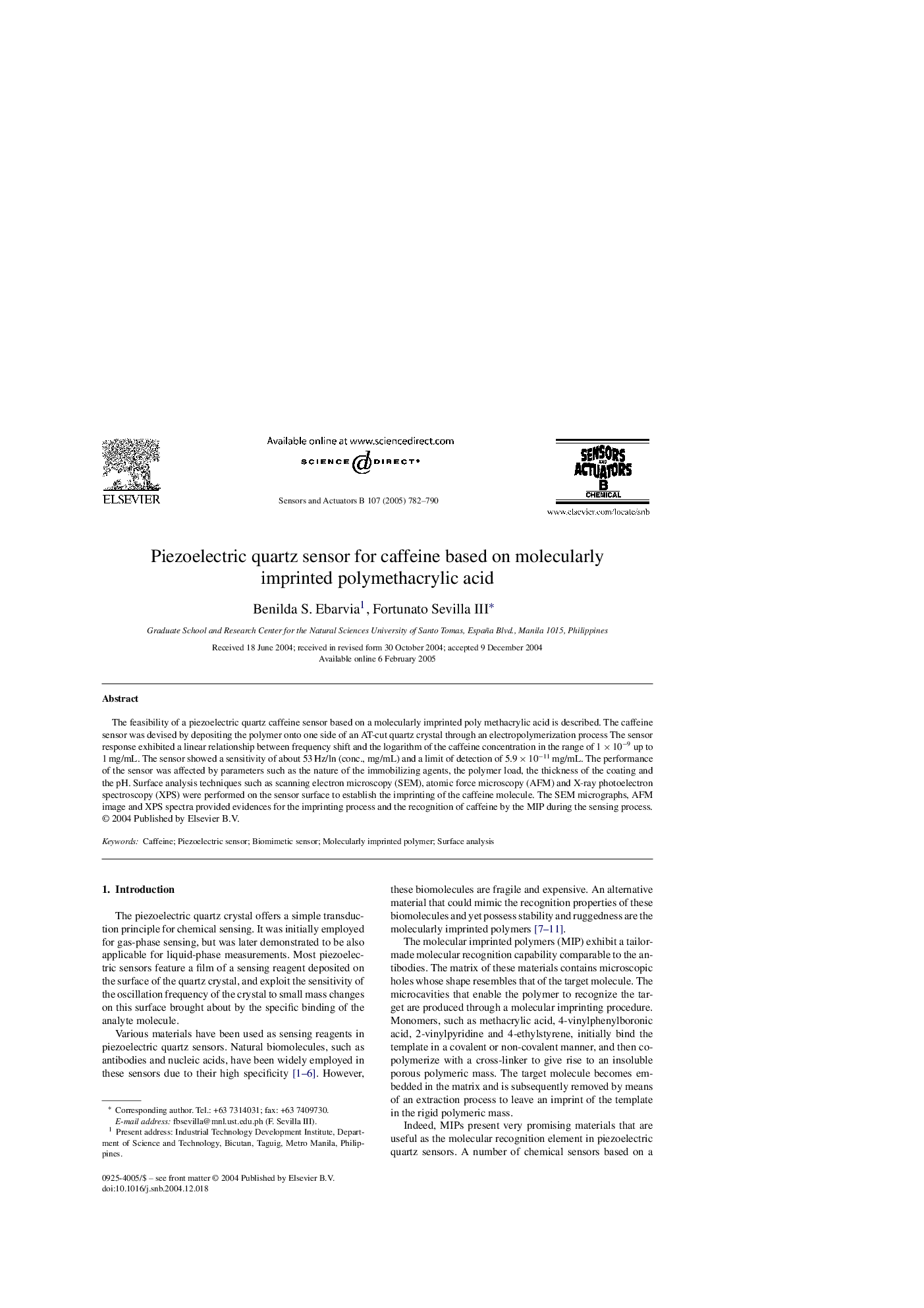| Article ID | Journal | Published Year | Pages | File Type |
|---|---|---|---|---|
| 10410919 | Sensors and Actuators B: Chemical | 2005 | 9 Pages |
Abstract
The feasibility of a piezoelectric quartz caffeine sensor based on a molecularly imprinted poly methacrylic acid is described. The caffeine sensor was devised by depositing the polymer onto one side of an AT-cut quartz crystal through an electropolymerization process The sensor response exhibited a linear relationship between frequency shift and the logarithm of the caffeine concentration in the range of 1Â ÃÂ 10â9 up to 1Â mg/mL. The sensor showed a sensitivity of about 53Â Hz/ln (conc., mg/mL) and a limit of detection of 5.9Â ÃÂ 10â11Â mg/mL. The performance of the sensor was affected by parameters such as the nature of the immobilizing agents, the polymer load, the thickness of the coating and the pH. Surface analysis techniques such as scanning electron microscopy (SEM), atomic force microscopy (AFM) and X-ray photoelectron spectroscopy (XPS) were performed on the sensor surface to establish the imprinting of the caffeine molecule. The SEM micrographs, AFM image and XPS spectra provided evidences for the imprinting process and the recognition of caffeine by the MIP during the sensing process.
Related Topics
Physical Sciences and Engineering
Chemistry
Analytical Chemistry
Authors
Benilda S. Ebarvia, Fortunato III,
